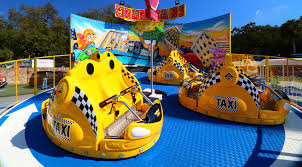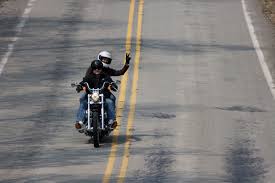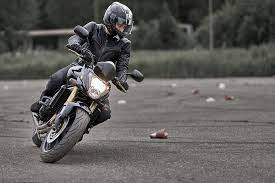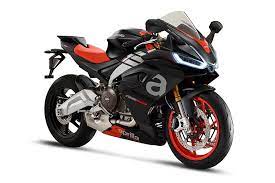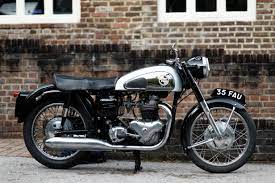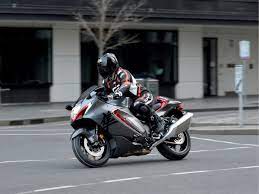
Motorcycles: Embracing the Freedom of the Open Road
There’s something undeniably captivating about motorcycles. From their sleek designs to the powerful engines that roar beneath them, motorcycles have long held a special place in the hearts of riders around the world. They embody a sense of freedom, adventure, and a connection with the open road that is hard to replicate.
One of the most alluring aspects of motorcycles is their ability to transport us to a different realm. As we straddle our bikes and don our helmets, we are instantly transported from our daily routines into a world where worries fade away and adrenaline takes over. The wind in our face, the rumble of the engine, and the sensation of speed create an exhilarating experience like no other.
But motorcycles offer more than just a thrilling ride; they provide a unique perspective on our surroundings. Unlike being enclosed in a car, riding a motorcycle allows us to truly immerse ourselves in our environment. We feel every curve of the road, smell the scents carried by the breeze, and witness nature’s beauty firsthand. It’s an intimate connection with our surroundings that few other modes of transportation can offer.
Moreover, motorcycles foster a strong sense of camaraderie among riders. Whether it’s joining a group ride or simply exchanging nods with fellow bikers on the road, there is an unspoken bond that ties us together. We share stories, tips, and experiences with one another, creating a community united by our passion for two wheels.
However, it’s important to acknowledge that riding motorcycles comes with responsibilities. Safety should always be paramount. Wearing proper protective gear such as helmets and riding jackets is essential for every rider. Additionally, continuous training and adherence to traffic rules are crucial for ensuring not only our own safety but also that of others sharing the road.
Motorcycles also provide an environmentally friendly alternative to traditional vehicles. With their smaller carbon footprint compared to cars, motorcycles contribute to reducing pollution and congestion on our roads. They offer a more efficient and economical means of transportation, making them an attractive option for those seeking greener alternatives.
Whether you’re a seasoned rider or someone considering taking up motorcycling for the first time, there’s no denying the allure of these two-wheeled machines. They offer an escape from the mundane, a chance to embrace adventure, and a unique way to connect with both nature and fellow enthusiasts.
So, if you’re ready to experience the freedom of the open road in its purest form, hop on a motorcycle and let it take you on a journey like no other. Embrace the wind in your hair, the thrill in your veins, and the sense of liberation that only motorcycles can provide. It’s time to embark on an unforgettable ride towards new horizons.
9 Pros of Motorcycles: A Comprehensive Guide to their Benefits
- Economical – Motorcycles are much more economical than cars as they use less fuel and cost less to maintain.
- Parking – Motorcycles can be parked in much smaller spaces than cars, making them ideal for urban living.
- Eco-Friendly – Motorcycles are a great eco-friendly option as they produce fewer emissions than cars and other vehicles.
- Fun – Riding a motorcycle is an enjoyable experience that many people find exhilarating and exciting!
- Affordable – Compared to buying a car, motorcycles are generally much more affordable, meaning you don’t have to break the bank to get one!
- Easy To Learn – Learning how to ride a motorcycle is relatively easy compared with learning how to drive a car, so it’s perfect for beginners who want to get out on the roads quickly!
- Versatile – Motorcycles can be used for many different purposes such as commuting, touring or off-roading depending on your needs and preferences.
- Accessibility – Many motorcycles come with special features such as low seats or adjustable handlebars which make them accessible for riders of all sizes and shapes!
- Maintenance – Regular maintenance of your motorcycle is important but it doesn’t take up too much time or money compared with maintaining other vehicles!
Drawbacks of Motorcycles: Safety Concerns, Costly Maintenance, and Noise Pollution
- They are more dangerous than cars due to their lack of protection and stability in an accident.
- They can be expensive to maintain and repair, especially if you don’t have the right tools or knowledge.
- They can be noisy and cause noise pollution in residential areas.
Economical – Motorcycles are much more economical than cars as they use less fuel and cost less to maintain.
Economical – The Cost-Saving Advantage of Motorcycles
When it comes to transportation, motorcycles offer a distinct advantage over cars: they are significantly more economical. From fuel efficiency to maintenance costs, motorcycles prove to be a wise choice for those looking to save money without compromising on the thrill of the open road.
One of the most obvious ways that motorcycles excel in terms of economy is their fuel consumption. Compared to cars, motorcycles require far less fuel to travel the same distance. Their smaller engines and lighter weight contribute to their impressive fuel efficiency, allowing riders to go further on a tank of petrol. This not only saves money at the pump but also reduces our carbon footprint, making motorcycles an environmentally friendly choice.
In addition to their lower fuel consumption, motorcycles also come with reduced maintenance costs. With fewer components and simpler mechanical systems compared to cars, maintaining a motorcycle tends to be more affordable. Routine services such as oil changes, tire replacements, and general upkeep are generally less expensive for motorcycles. Moreover, many motorcycle owners have the skills and knowledge to perform basic maintenance themselves, further reducing expenses.
Insurance premiums for motorcycles are often lower than those for cars as well. Due to their smaller size and typically lower speeds compared to cars, insurers often view motorcycles as less risky vehicles. This can result in significant savings when it comes time to insure your ride.
Furthermore, parking fees and congestion charges are often more favorable for motorcycles in urban areas. Many cities provide designated motorcycle parking spaces which are either free or cheaper than car parking options. Some cities even exempt motorcycles from congestion charges or tolls, making them an attractive choice for commuters seeking cost-effective transportation solutions.
It’s important to note that while motorcycles offer economic advantages, safety should always be a top priority. Riders must invest in proper safety gear and undergo proper training before hitting the road. Adhering to traffic rules and riding defensively can help mitigate risks associated with motorcycling.
In conclusion, motorcycles provide an economical alternative to cars. With their impressive fuel efficiency, lower maintenance costs, and potential savings on insurance and parking fees, motorcycles offer a cost-saving advantage without compromising on the joy of riding. So, if you’re looking to save money while enjoying the freedom of the open road, consider hopping on a motorcycle and embracing its economical benefits.
Parking – Motorcycles can be parked in much smaller spaces than cars, making them ideal for urban living.
Parking – Motorcycles: The Perfect Solution for Urban Living
When it comes to urban living, finding a parking space can often be a frustrating experience. Limited parking availability and congested streets make it challenging for car owners to secure a spot. However, there is one mode of transportation that offers a convenient solution – motorcycles.
One of the significant advantages of motorcycles in urban areas is their ability to squeeze into small parking spaces. Unlike cars, which require ample room to park, motorcycles can fit into tight spots with ease. This means that motorcycle owners have a wider range of parking options available to them, even in densely populated cities.
The compact size of motorcycles allows riders to take advantage of every nook and cranny when searching for parking. Whether it’s slipping into narrow gaps between cars or utilizing designated motorcycle bays, the versatility of motorcycles ensures that finding a place to park becomes less of a headache.
In addition to their ability to fit into tight spaces, motorcycles often enjoy certain privileges when it comes to parking regulations. Many cities provide designated motorcycle parking areas, allowing riders to park closer to their destinations and saving them valuable time and effort.
Moreover, the smaller footprint of motorcycles contributes positively towards reducing congestion on urban streets. By occupying less space than cars, motorcycles help alleviate traffic congestion and free up more room for other vehicles. This not only benefits riders but also contributes towards creating more efficient and sustainable urban environments.
Furthermore, the convenience offered by motorcycle parking extends beyond just finding a space. Parking fees for motorcycles are often significantly lower than those for cars or even free in some areas. This cost advantage makes owning and using a motorcycle an attractive option for individuals living in urban areas where parking expenses can quickly add up.
Overall, the ability of motorcycles to be parked in smaller spaces makes them an ideal choice for urban living. They offer convenience, flexibility, and cost savings when it comes to finding suitable parking options in crowded cities. Whether you’re commuting to work, meeting friends, or running errands, motorcycles provide a practical and efficient means of transportation that fits seamlessly into the urban landscape.
So, if you’re tired of endlessly circling the block in search of parking or facing exorbitant fees for your car, consider embracing the advantages of motorcycles. Experience the freedom of effortlessly finding a parking spot and enjoy the convenience that comes with owning a motorcycle in urban environments. It’s time to navigate city streets with ease and make the most out of urban living.
Eco-Friendly – Motorcycles are a great eco-friendly option as they produce fewer emissions than cars and other vehicles.
Eco-Friendly: Embracing Sustainability with Motorcycles
In an era where environmental concerns are at the forefront of our minds, finding eco-friendly transportation options is crucial. Fortunately, motorcycles offer a fantastic solution. With their smaller engines and efficient fuel consumption, motorcycles produce fewer emissions compared to cars and other vehicles, making them a greener choice for the environmentally conscious.
The reduced emissions from motorcycles contribute to cleaner air and a healthier environment. Their smaller size and lighter weight result in lower fuel consumption, minimizing the carbon footprint associated with transportation. This is especially important in crowded urban areas where traffic congestion and pollution levels can be significant challenges.
Moreover, motorcycles are not only eco-friendly in terms of their emissions but also when it comes to resource usage. They require fewer materials to manufacture compared to cars, reducing the demand for precious resources like steel and plastics. Additionally, motorcycles take up less space on roads and parking lots, helping to alleviate congestion and preserve green spaces.
Choosing a motorcycle as your mode of transport not only benefits the environment but also offers personal advantages. They are often more fuel-efficient than cars, which means you’ll spend less money on petrol or other fuels. This cost-effectiveness makes motorcycles an attractive option for those looking to save money on transportation expenses.
Furthermore, riding a motorcycle can be an enjoyable experience in itself. The sense of freedom and connection with the road that motorcycling provides can enhance your overall journey. You’ll have the opportunity to explore scenic routes, take in breathtaking views, and experience a different level of engagement with your surroundings.
Of course, it’s essential to prioritize safety when riding a motorcycle. Wearing proper protective gear such as helmets and riding jackets is crucial for your well-being. Additionally, maintaining your motorcycle regularly ensures optimal performance while minimizing emissions.
By choosing an eco-friendly option like motorcycles for our daily commute or recreational rides, we contribute to building a sustainable future. Every small step towards reducing emissions and resource consumption counts. Let’s embrace the eco-friendly advantages of motorcycles and play our part in creating a greener, cleaner world for generations to come.
Fun – Riding a motorcycle is an enjoyable experience that many people find exhilarating and exciting!
Fun – The Thrilling Joy of Motorcycle Riding
Riding a motorcycle is more than just a mode of transportation; it’s an exhilarating and exciting experience that brings immense joy to countless riders. The sheer fun and enjoyment derived from riding a motorcycle is unparalleled, making it a unique and thrilling activity.
There’s an undeniable sense of freedom that comes with straddling a motorcycle. As the engine roars to life and the wind rushes past, riders are instantly transported into a world of pure excitement. The feeling of acceleration, the nimble maneuvering through twists and turns, and the open road ahead create an adrenaline-fueled adventure like no other.
Unlike being confined within the four walls of a car, riding a motorcycle provides an immersive experience. Every bump on the road, every change in terrain, and every curve becomes part of the journey. It’s as if you become one with your machine, effortlessly gliding through the landscape while being fully attuned to your surroundings.
The fun factor extends beyond just the physical sensations. Motorcycle riding also offers a mental escape from everyday stresses. As riders focus on navigating their bikes through traffic or along scenic routes, they find themselves fully immersed in the present moment. Worries melt away as they become absorbed in the pure joy of riding.
Additionally, motorcycles have a way of fostering camaraderie among riders. Whether it’s joining group rides or attending motorcycle events, there’s a strong sense of community that develops among enthusiasts. Sharing stories, tips, and experiences with fellow riders adds another layer of enjoyment to the overall motorcycle experience.
Of course, it’s important to prioritize safety while indulging in this thrilling activity. Wearing appropriate protective gear such as helmets, gloves, jackets, and boots is crucial for ensuring both enjoyment and safety on two wheels. Adhering to traffic rules and continuously improving riding skills through training courses are also essential for maximising fun while minimizing risks.
So, if you’re seeking an activity that offers pure exhilaration and an escape from the ordinary, look no further than motorcycle riding. The joy, freedom, and excitement it brings are unparalleled. Hop on a bike, feel the thrill of the open road, and experience firsthand why motorcycle riding is an adventure that never fails to put a smile on your face.
Affordable – Compared to buying a car, motorcycles are generally much more affordable, meaning you don’t have to break the bank to get one!
Affordable – Unlocking the Thrills of Motorcycling Without Breaking the Bank
When it comes to choosing a mode of transportation, affordability is often a key consideration. In this regard, motorcycles have a distinct advantage over cars. Compared to buying a car, motorcycles are generally much more affordable, making them an attractive option for those seeking an exhilarating ride without draining their bank accounts.
One of the primary reasons why motorcycles are more affordable is their lower upfront cost. The price tag on a brand-new motorcycle is typically significantly lower than that of a new car. This makes motorcycles accessible to a wider range of individuals, including those who may be on a tighter budget or looking for a cost-effective alternative.
Moreover, motorcycles tend to be more fuel-efficient than cars. With rising fuel prices and increasing environmental concerns, this advantage becomes even more significant. Motorcycles can go further on less fuel, allowing riders to save money at the pump and reduce their carbon footprint simultaneously.
Maintenance costs for motorcycles are also generally lower compared to cars. Motorcycle parts and servicing often come at a fraction of the price of their four-wheeled counterparts. This affordability extends throughout the lifespan of the motorcycle, making it easier on the wallet when it comes to regular maintenance and repairs.
Insurance premiums for motorcycles are typically cheaper as well. Insurance providers consider various factors when determining premiums, such as the type of motorcycle and the rider’s experience level. However, in general, insuring a motorcycle tends to be less expensive than insuring a car with similar specifications.
Furthermore, motorcycles offer excellent resale value. Due to their popularity and demand in both new and used markets, motorcycles hold their value relatively well over time. This means that if you decide to sell your motorcycle in the future, you can expect to recoup a significant portion of your initial investment.
Affordability is undoubtedly one of the standout advantages that make motorcycles an appealing choice for many enthusiasts. With lower upfront costs, reduced fuel consumption, affordable maintenance, and insurance premiums, motorcycles offer a cost-effective means of transportation without compromising on the joy and freedom they provide.
So, if you’ve been considering embracing the world of motorcycling but have concerns about budget constraints, rest assured that motorcycles offer an affordable solution. With their enticing price tags and economical nature, you can unlock the thrills of riding without breaking the bank. Get ready to hit the road and experience the exhilaration that comes with owning a motorcycle – all at a price that won’t leave your wallet empty.
Easy To Learn – Learning how to ride a motorcycle is relatively easy compared with learning how to drive a car, so it’s perfect for beginners who want to get out on the roads quickly!
Easy To Learn: The Perfect Choice for Beginners
When it comes to learning how to navigate the roads, motorcycles offer a distinct advantage over cars. Learning to ride a motorcycle is relatively easy compared to mastering the intricacies of driving a car. This makes motorcycles the perfect choice for beginners who are eager to hit the road quickly and experience the thrill of two-wheeled freedom.
Unlike driving a car, which involves juggling multiple controls and mastering complex maneuvers, riding a motorcycle requires a simpler set of skills. The basic principles of balance, throttle control, and steering are more intuitive on a motorcycle, making it easier for beginners to grasp the fundamentals.
The smaller size and lighter weight of motorcycles also contribute to their ease of learning. Maneuvering through traffic or navigating tight spaces becomes less daunting when you’re on two wheels. Motorcycles offer greater agility and maneuverability, allowing beginners to build confidence in their riding skills more quickly.
Another advantage for beginners is that motorcycles typically have manual transmissions. While this may initially seem intimidating, it actually simplifies the learning process. Shifting gears on a motorcycle is often more straightforward than operating an automatic transmission in a car. With practice, gear changes become second nature, allowing riders to focus on enjoying their time on the road.
Additionally, many countries offer streamlined licensing processes specifically designed for motorcycles. This means that aspiring riders can obtain their motorcycle license more quickly than a full driver’s license for cars. It’s an attractive option for those who want to start their journey on two wheels without having to go through lengthy training programs or bureaucratic procedures.
However, it’s important to note that while motorcycles may be easier to learn than cars, safety should always be a top priority. Novice riders should invest time in proper training and education before venturing out onto busy roads. Enrolling in certified motorcycle training courses can provide valuable knowledge and skills that will enhance both safety and enjoyment while riding.
So, if you’re a beginner eager to embrace the freedom of the open road, motorcycles offer a fantastic opportunity to get out there quickly. With their easier learning curve, simplified controls, and streamlined licensing processes, motorcycles are the perfect choice for those who want to embark on their riding journey without delay. Start your engines and enjoy the thrill of motorcycling in no time!
Versatile – Motorcycles can be used for many different purposes such as commuting, touring or off-roading depending on your needs and preferences.
Versatile – Motorcycles: The Ultimate Multi-Purpose Ride
When it comes to transportation, motorcycles are the epitome of versatility. These two-wheeled wonders offer a wide range of uses, catering to various needs and preferences. Whether you’re looking for a practical daily commute, an adventurous off-road exploration, or an exhilarating long-distance tour, motorcycles have got you covered.
For many riders, motorcycles are the ideal choice for commuting. With their compact size and nimble maneuverability, they effortlessly navigate through congested city streets and busy traffic. Motorcycles provide a practical solution for those seeking a more efficient and time-saving way to get from point A to point B. Not only do they offer quick acceleration and easy parking options, but they also provide an enjoyable ride that turns the daily commute into a thrilling experience.
But motorcycles aren’t limited to urban environments alone. They are equally adept at conquering off-road terrains and exploring the great outdoors. Designed with ruggedness in mind, off-road motorcycles possess features such as high ground clearance, sturdy suspension systems, and knobby tires that can tackle challenging terrains with ease. Whether you’re venturing into muddy trails or rocky paths, these versatile machines allow you to embrace your adventurous spirit while experiencing the thrill of conquering nature’s obstacles.
Motorcycles also excel in fulfilling the desires of avid tourers. With their ability to cover long distances efficiently, touring motorcycles provide comfort and convenience for those seeking epic journeys on the open road. Equipped with comfortable seating positions, spacious luggage options, and advanced technology features like navigation systems and cruise control, touring bikes ensure that riders can embark on extended trips with ease and enjoyment.
What makes motorcycles truly versatile is their adaptability to different riding styles and preferences. From cruisers that exude classic style and laid-back comfort to sport bikes that deliver adrenaline-pumping speed and agility on the racetrack, there is a motorcycle to suit every rider’s taste. Whether you’re a beginner or an experienced rider, motorcycles offer a wide range of options to match your skill level and desired riding experience.
In conclusion, motorcycles are the epitome of versatility in the world of transportation. They effortlessly adapt to various purposes such as commuting, touring, or off-roading, making them the ultimate multi-purpose ride. So whether you’re seeking a practical daily commute, an adventurous off-road exploration, or an unforgettable long-distance tour, hop on a motorcycle and let it take you on an incredible journey tailored to your needs and preferences. Embrace the versatility of motorcycles and unlock a world of possibilities on two wheels.
Accessibility – Many motorcycles come with special features such as low seats or adjustable handlebars which make them accessible for riders of all sizes and shapes!
Accessibility: Motorcycles for All Shapes and Sizes
When it comes to motorcycles, one of their greatest advantages is their accessibility. Unlike many other vehicles, motorcycles offer a wide range of features that make them suitable for riders of all sizes and shapes. From low seats to adjustable handlebars, these special accommodations ensure that everyone can experience the joy of riding on two wheels.
For riders who may be shorter in stature, motorcycles with low seats are a game-changer. These bikes allow riders to easily plant their feet on the ground when coming to a stop, providing a sense of stability and confidence. Whether you’re a beginner or an experienced rider, having this level of control can greatly enhance your riding experience.
On the other hand, adjustable handlebars offer flexibility for riders with different arm lengths or preferences. Being able to customize the position and height of the handlebars ensures optimal comfort and control while riding. It allows riders to find their perfect riding position, reducing strain on the arms, shoulders, and back.
The beauty of these accessibility features is that they cater to a diverse range of individuals. Motorcycles are not limited by age or body type; they can be enjoyed by people from all walks of life. Whether you’re tall or short, have long arms or short arms, there’s a motorcycle out there that can be adjusted to suit your needs.
Moreover, these accessibility features extend beyond physical limitations. Motorcycles also provide an accessible mode of transportation for those who may face financial constraints or live in congested urban areas where parking space is limited. Their compact size allows for easy maneuverability through traffic and finding parking spots that larger vehicles would struggle with.
Motorcycling is not just about speed and thrill; it’s about inclusivity and embracing diversity within the riding community. These accessibility features empower individuals who may have thought motorcycling was out of reach for them due to physical limitations or other constraints.
So whether you’re tall, short, or somewhere in between, motorcycles offer a world of possibilities. With their special features designed for accessibility, they ensure that riders of all shapes and sizes can experience the freedom and joy that comes with riding on two wheels. It’s time to break down barriers and hit the open road, because when it comes to motorcycles, there’s a ride for everyone.
Maintenance – Regular maintenance of your motorcycle is important but it doesn’t take up too much time or money compared with maintaining other vehicles!
Maintenance – The Easy and Affordable Side of Motorcycling
When it comes to owning a vehicle, maintenance is an inevitable part of the package. However, one of the significant advantages of motorcycles is that their regular upkeep doesn’t demand excessive time or money compared to other vehicles.
Motorcycles are known for their simplicity and streamlined design, which translates into a more straightforward maintenance process. Unlike cars with complex engines and intricate systems, motorcycles have fewer components that require attention. This means that routine maintenance tasks can be completed more quickly and efficiently.
Basic motorcycle maintenance typically includes tasks such as oil changes, chain lubrication, tire checks, and brake inspections. These tasks are relatively straightforward and can often be done by riders themselves with a little guidance or basic knowledge. This hands-on approach not only saves money on professional servicing but also allows riders to develop a deeper understanding of their bikes.
Furthermore, the cost of motorcycle maintenance is generally lower when compared to larger vehicles. Motorcycles tend to have smaller engines and fewer parts, resulting in reduced costs for replacement components. Additionally, fuel efficiency plays a significant role in keeping running costs down for motorcycles, making them more economical to maintain over time.
Another advantage is that motorcycle parts are widely available and easily accessible. Whether you need a new spark plug or brake pads, finding the necessary components for your bike is usually hassle-free. Many manufacturers offer affordable aftermarket options as well, ensuring that maintaining your motorcycle doesn’t break the bank.
Regular maintenance not only keeps your motorcycle running smoothly but also contributes to its longevity. By taking care of your bike’s basic needs, you can extend its lifespan and enjoy many miles of trouble-free riding.
In conclusion, when it comes to maintaining your motorcycle, you’ll find that it’s both manageable in terms of time commitment and cost-effective compared to maintaining other vehicles. With simpler systems and readily available parts, keeping your bike in top shape becomes an enjoyable part of the ownership experience. So, embrace the ease of motorcycle maintenance and hit the road with confidence, knowing that your two-wheeled companion is always ready for the next adventure!
They are more dangerous than cars due to their lack of protection and stability in an accident.
Motorcycles: Addressing Safety Concerns for a Thrilling Ride
When it comes to the world of transportation, motorcycles hold a special place in the hearts of many. They offer an unmatched sense of freedom and adventure, allowing riders to experience the open road in a way that is truly exhilarating. However, it is important to acknowledge one of the key concerns associated with motorcycles – their perceived lack of protection and stability in comparison to cars.
It is true that motorcycles do not provide the same level of physical protection as cars. Unlike being enclosed within a vehicle’s protective structure, riders are exposed to the elements, making them more vulnerable in the event of an accident. The absence of airbags, seat belts, and reinforced frames means that motorcyclists face higher risks on the road.
Additionally, motorcycles are inherently less stable than cars due to their two-wheeled design. Maintaining balance requires skill and attention from the rider, especially when navigating sharp turns or adverse weather conditions. This increased vulnerability to loss of control can contribute to accidents if proper caution and expertise are not exercised.
However, it is essential to emphasize that motorcycle safety is not solely determined by these factors. Riders can take proactive measures to mitigate risks and ensure their safety on the road. Wearing appropriate protective gear such as helmets, jackets, gloves, and boots significantly reduces the severity of injuries in case of an accident.
Furthermore, investing time in comprehensive rider training courses enhances skills and knowledge necessary for safe riding practices. These courses cover aspects such as defensive riding techniques, hazard recognition, and effective braking strategies – empowering motorcyclists with valuable tools for navigating various road scenarios.
Another crucial aspect is responsible behavior on the road. Adhering to traffic rules and regulations helps create a safer environment for all road users. Motorcyclists should maintain an awareness of their surroundings at all times and exercise caution when sharing roads with other vehicles.
It’s important not to let safety concerns overshadow the enjoyment and benefits of motorcycling. By addressing these concerns head-on and adopting a responsible approach, riders can strike a balance between the thrill of the ride and ensuring their well-being.
Ultimately, motorcycles offer an unparalleled experience that captivates riders around the world. While it is crucial to acknowledge their potential risks, it is equally important to emphasize that responsible riding practices, proper training, and appropriate safety gear can significantly mitigate these risks.
So, if you’re considering embracing the world of motorcycles, remember to prioritize safety alongside your passion for adventure. By doing so, you can confidently embark on thrilling journeys while ensuring your well-being on every ride.
They can be expensive to maintain and repair, especially if you don’t have the right tools or knowledge.
While motorcycles offer a thrilling and liberating experience, it’s important to acknowledge that they come with their fair share of challenges. One significant drawback is the potential expense associated with their maintenance and repairs, particularly if you lack the necessary tools or knowledge.
Motorcycles are complex machines that require regular upkeep to ensure optimal performance and longevity. From routine oil changes and tire replacements to more intricate tasks like carburetor adjustments or engine overhauls, the cost of maintenance can quickly add up. Moreover, if you rely solely on professional mechanics for every repair, the bills can become even more substantial.
One way to mitigate these costs is by acquiring the right tools and learning basic mechanical skills. With a modest investment in a set of quality tools and some self-education, you can tackle many routine maintenance tasks yourself. This not only saves money but also empowers you as a rider, allowing you to have a deeper understanding of your motorcycle’s inner workings.
However, it’s crucial to recognize that not everyone has the time or inclination to become a DIY motorcycle mechanic. In such cases, relying on professional services becomes necessary. Unfortunately, this can be expensive, especially if major repairs are required or if your motorcycle requires specialized parts that are costly to source.
To navigate this con effectively, it’s advisable to research the average costs of maintenance and repairs for your specific make and model before purchasing a motorcycle. This will give you a realistic understanding of what to expect in terms of ongoing expenses. Additionally, consider finding reputable mechanics who specialize in motorcycles and offer fair pricing.
Another approach is to explore extended warranty options when purchasing a new or used motorcycle. While these warranties come at an additional cost upfront, they can provide peace of mind by covering major repairs during the warranty period.
Ultimately, maintaining and repairing motorcycles can be expensive if you don’t have the right tools or knowledge. However, with careful planning, self-education, and informed decision-making regarding professional services, you can manage these costs effectively. Remember, the joy and freedom that motorcycles bring often outweigh the financial considerations, making them a worthwhile investment for passionate riders.
They can be noisy and cause noise pollution in residential areas.
Motorcycles: Addressing the Noise Issue for Harmonious Living
While motorcycles offer an exhilarating experience on the open road, it’s important to acknowledge that they can sometimes be associated with a downside – noise pollution. The powerful engines and unique exhaust systems that make motorcycles so thrilling can also contribute to excessive noise levels, particularly in residential areas.
The sound of a motorcycle’s engine revving can be quite loud and disruptive, especially when it echoes through quiet streets or during late hours. This noise disturbance can lead to frustration and annoyance among residents who are seeking peace and tranquility in their own homes.
Recognizing this concern, it is essential for riders to be mindful of the impact their motorcycles may have on the surrounding community. By taking a few simple steps, we can work towards minimizing noise pollution while still enjoying our passion for motorcycles.
Firstly, investing in high-quality mufflers or exhaust systems designed to reduce noise emissions can significantly help in mitigating the issue. These specially designed components help to dampen the sound produced by the engine, ensuring a quieter ride without compromising performance.
Secondly, being considerate about when and where we ride our motorcycles can make a substantial difference. Avoiding unnecessarily revving engines or accelerating rapidly in residential areas during early mornings or late evenings is a respectful approach towards maintaining harmony within these communities.
Thirdly, actively engaging in ongoing dialogue with local authorities and residents can foster understanding and cooperation. By addressing concerns and seeking solutions together, we can find common ground that benefits both riders and those living nearby.
Lastly, education plays a vital role in promoting responsible motorcycle riding practices. Encouraging riders to undergo training programs that emphasize not only safety but also consideration for others can help create a culture of respect on the roads. Understanding how our actions impact those around us is crucial for fostering positive relationships between motorcyclists and the wider community.
By taking these steps collectively as riders, we can work towards minimizing the noise pollution caused by motorcycles in residential areas. It’s important to remember that we all share the responsibility of creating a harmonious living environment where everyone can enjoy their surroundings without unnecessary disruptions.
Let’s embrace our passion for motorcycles while being mindful of the impact we have on our communities. By addressing the noise issue and working together, we can strike a balance that allows us to continue enjoying the thrill of riding while respecting the needs and comfort of those around us.
